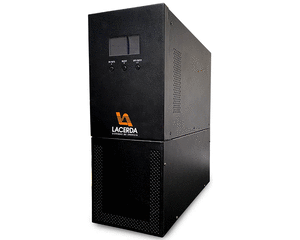No Blog Eletrônica de Potência você encontrará informações sobre teses,artigos,seminarios,congressos,tecnologias,cursos,sobre eletrônica potência. “TEMOS O DESTINO QUE MERECEMOS. O NOSSO DESTINO ESTA DE ACORDO COM OS NOSSOS MERITOS” ALBERT EINSTEIN. Imagination is more important than knowledge, for knowledge is limited while imagination embraces the entire world. EL FUTURO SE CONSTRUYE HOY,EL SUCESSO NO ES FRUTO DE LA CASUALIDAD,SE HUMILDE ,APRENDE SIEMPRE CADA DIA.
AUTOR DO BLOG ENG.ARMANDO CAVERO MIRANDA SÃO PAULO BRASIL

.gif)
“SE SEUS PROJETOS FOREM PARA UM ANO,SEMEIE O GRÂO.SE FOREM PARA DEZ ANOS,PLANTE UMA ÁRVORE.SE FOREM PARA CEM ANOS,EDUQUE O POVO.”
“Sixty years ago I knew everything; now I know nothing; education is a progressive discovery of our own ignorance. Will Durant”


https://picasion.com/


sábado, 18 de setembro de 2021
terça-feira, 14 de setembro de 2021
Model Predictive Control for Paralleled Uninterruptible Power Supplies with an Additional Inverter Leg for Load-Side Neutral Connection Tiago Oliveira , Luís Caseiro , André Mendes , Sérgio Cruz and Marina Perdigão Department of Electrical and Computer Engineering, University of Coimbra-
Abstract
Uninterruptible Power Supplies (UPS) have been demonstrated to be the key technology in feeding either single- and three-phase loads in a wide range of critical applications, such as high-tier datacenters and medical facilities. To increase the overall system power capacity and resilience, UPS systems are usually connected in parallel. When UPS systems are parallel connected, a circulating current can rise, inhibiting correct system operation. Moreover, having a controlled load power distribution is another fundamental requirement in paralleled UPS systems. However, strategies to ensure these two topics have not been explored to date for UPS systems with a load-side neutral connection. This paper proposes an innovative Finite Control Set Model Predictive Control (FCS-MPC) strategy that ensures circulating current elimination and controlled load power distribution for paralleled UPS systems that use an additional inverter leg for load neutral point connection. Additionally, a system topology based on two parallel-connected UPS systems that can simultaneously supply single- and three-phase critical loads is proposed. Experimental results show the effectiveness and robustness of the proposed control techniques even when different types of loads are connected to the UPS systems.
VIEW FULL TEXT WEB: https://www.mdpi.com/1996-1073/14/8/2270
High-Power-Density GaN-Based Single-Phase Online Uninterruptible Power Supply Danish Shahzad, Nauman Zaffar*, Khurram K. Afridi Department of Electrical and Computer Engineering Cornell University Ithaca, New York, USA ds2358@cornell.edu, afridi@cornell.edu *Lahore University of Management Sciences Lahore, Pakistan
Abstract— This paper introduces a new topology suitable for a high-power-density single-phase online uninterruptible power supply (UPS) with a common neutral between its input and output ac ports while avoiding a split dc bus. The proposed topology enables high power density by utilizing half-bridge switch structures compatible with MHz-frequency operation. High efficiency is maintained in this converter by achieving soft-switching in rectifier stage with a boundary conduction mode control strategy. A comprehensive design methodology is developed to optimize the design of this converter. A 1-kVA prototype online UPS based on the proposed topology that utilizes GaN transistors and operates at switching frequencies up to 2 MHz is built and tested. The prototyped UPS achieves a power density of 26.4 W/in3.
sexta-feira, 10 de setembro de 2021
Gallium Nitride Converters for Spacecraft Applications by Thomas Vernon Cook B.S. Electrical Engineering, University of Pittsburgh, 2017 Submitted to the Graduate Faculty of the Swanson School of Engineering in partial ful llment of the requirements for the degree of Master of Science University of Pittsburgh
Gallium Nitride Converters for Spacecraft Applications by Thomas Vernon Cook B.S. Electrical Engineering, University of Pittsburgh, 2017 Submitted to the Graduate Faculty of the Swanson School of Engineering in partial ful llment of the requirements for the degree of Master of Science University of Pittsburgh UNIVERSITY OF PITTSBURGH SWANSON SCHOOL OF ENGINEERING This thesis was presented by Thomas Vernon Cook It was defended on November 11, 2019 and approved by Dr. Brandon Grainger, PhD., Assistant Professor, Department of Electrical and Computer Engineering Dr. Alexis Kwasinski, PhD., Associate Professor, Department of Electrical and Computer Engineering Dr. Alan George, PhD., Department Chair, Department of Electrical and Computer Engineering Thesis Advisor: Dr. Brandon Grainger, PhD., Assistant Professor, Department of Electrical and Computer Engineering
Assinar:
Postagens (Atom)




